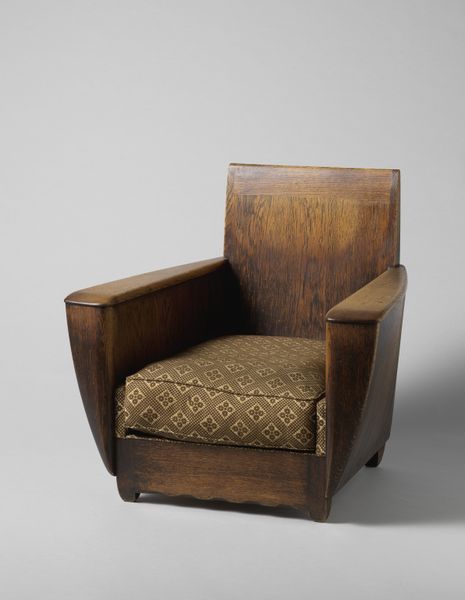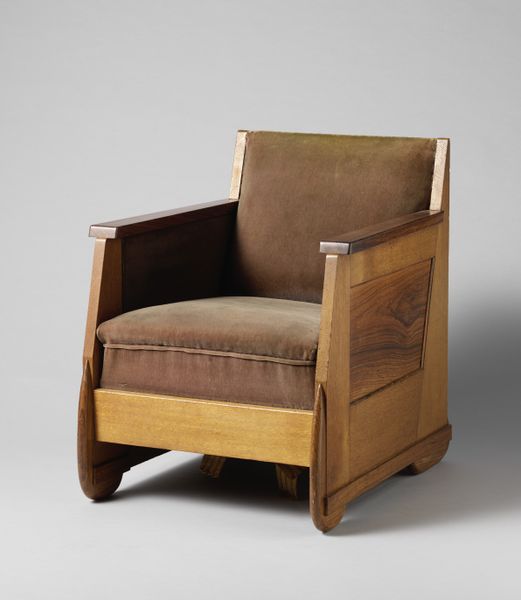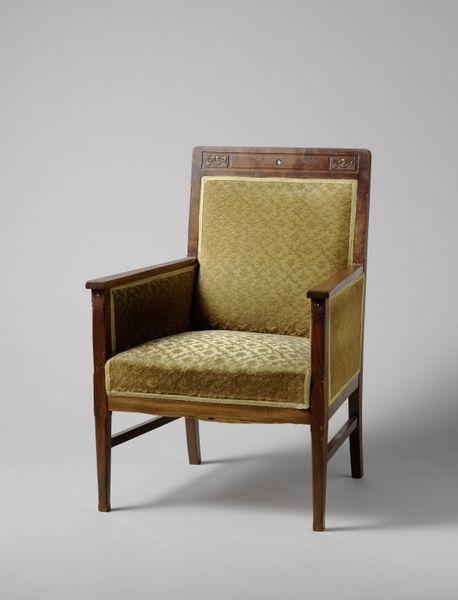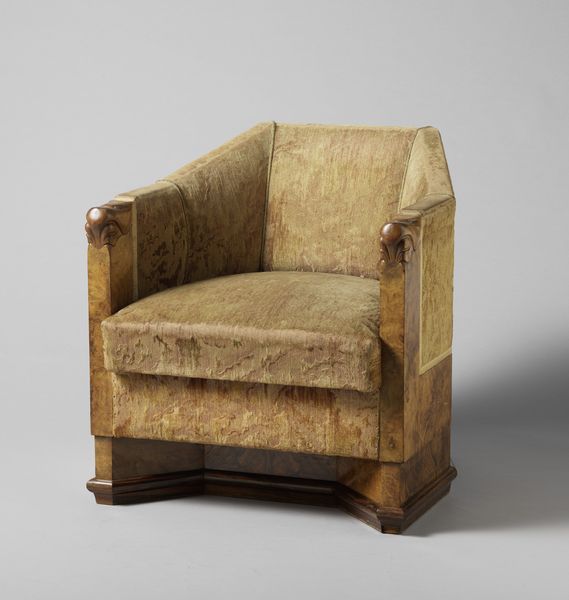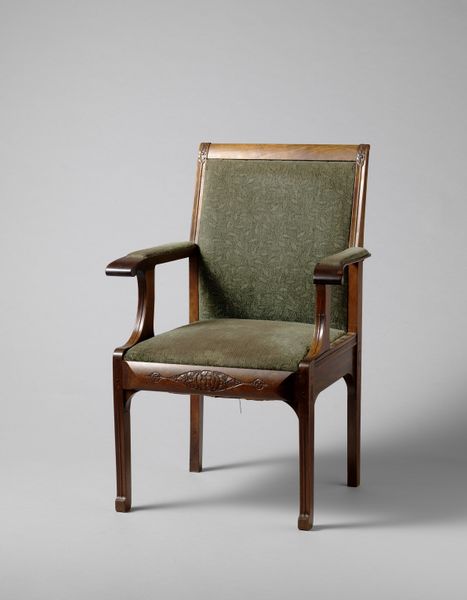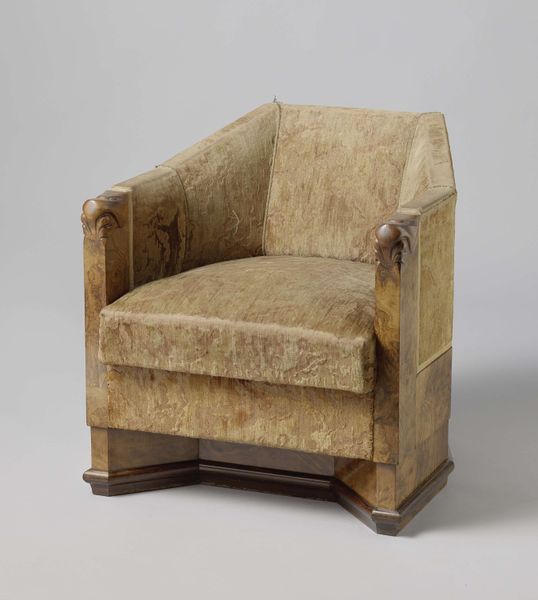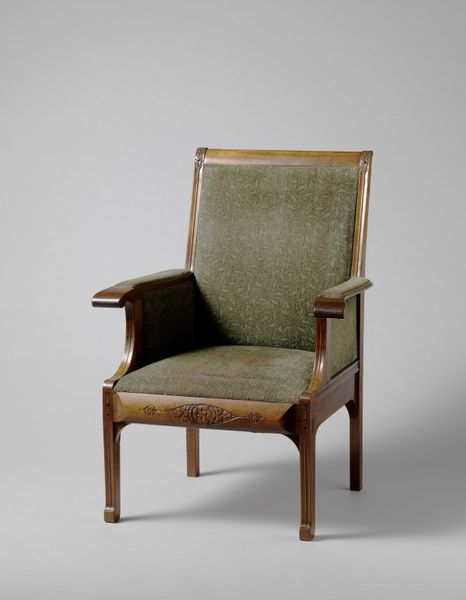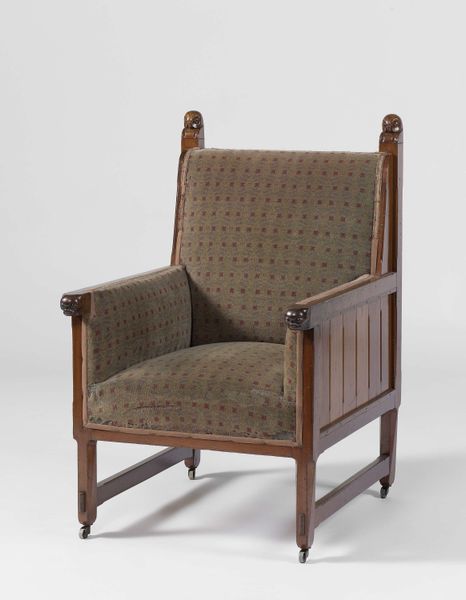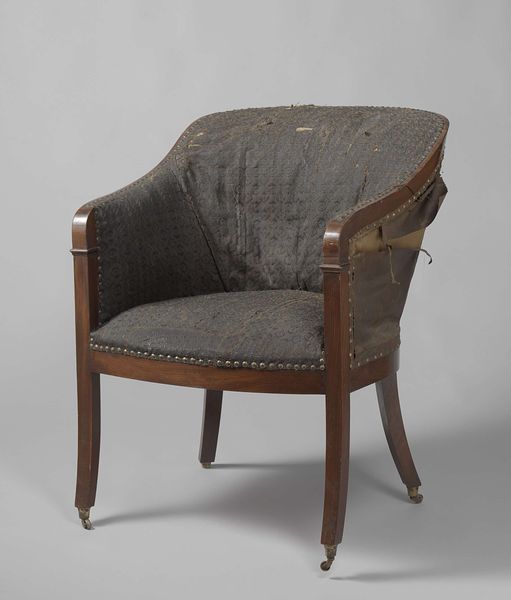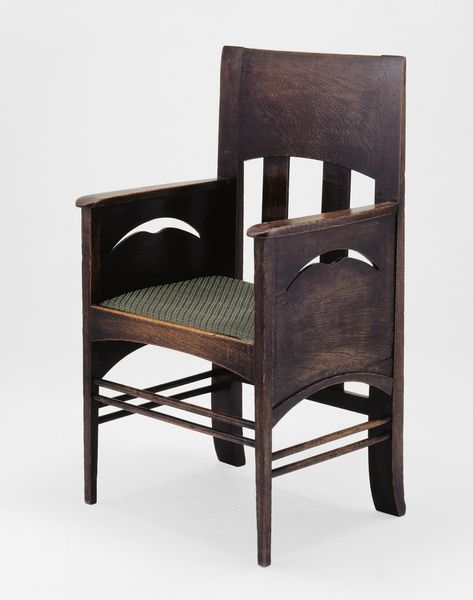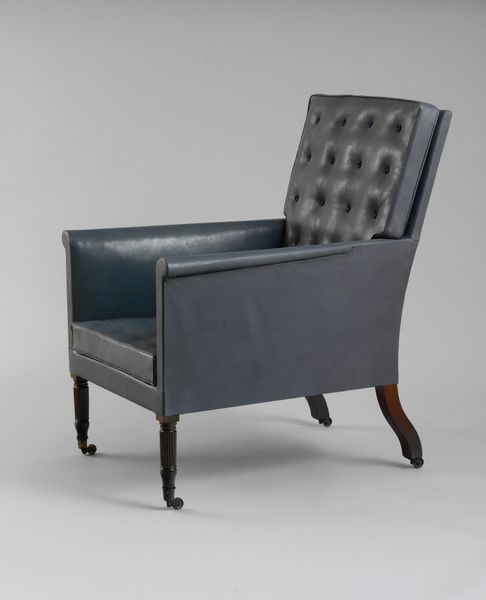
Fauteuil met hoog opgetrokken rugleuning en bekleed met een beige stof met een bruin ruitmotief c. 1921
0:00
0:00
Dimensions: height 109.0 cm, width 80.0 cm, depth 81.0 cm, weight 30 kg
Copyright: Rijks Museum: Open Domain
Curator: This captivating fauteuil with a high backrest, upholstered in beige fabric with a brown diamond pattern, comes to us from around 1921, designed by Wim Schuhmacher. Editor: The rigid lines of this piece, mixed with the ornate fabric, makes it simultaneously inviting and a bit severe. I’m drawn to the contrast; it presents this interesting tension between comfort and authority. Curator: I find the interplay between that stark geometric structure, and the natural grain of the wood to be quite intriguing. Art Nouveau often aimed to elevate everyday objects, but Schuhmacher takes a rather stoic approach. What was the goal of an artist creating pieces of functional art, which often could not even be afforded by workers? Editor: That upholstered cushion is key; its textile tells a story of production and consumption. Who wove the fabric? What was the social status of someone who would purchase something like this, and what was that experience? These objects give us an index of economic relations from the period. Curator: Precisely. And the design itself speaks to a broader cultural shift. While the decorative fabric speaks to wealth, that stark back is so intentionally austere, signalling a departure from excessive ornamentation to a celebration of utility and what art could be within that shift. I’m struck by how Schuhmacher balances tradition and modernity, creating a piece that reflects both the comfort of domesticity and the rise of industrial aesthetics. Editor: Right, you get this clear sense of handcrafted labour married to something of an assembly-line product. And it brings up an ongoing negotiation: where do we assign the label of 'art' and where 'design'? Is that conversation even useful? Thinking of the labour behind this also connects it to the user - did that textile feel the same, seem the same, after a long, hard day for that person than it does simply displayed here? Curator: It makes you question how much of its intended impact is changed, now it sits isolated, and silent. Editor: A fascinating blend of design, craftsmanship, and social history encapsulated in a single armchair!
Comments
No comments
Be the first to comment and join the conversation on the ultimate creative platform.
